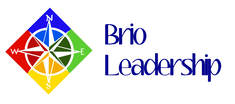|
In my last newsletter, I said I’d finish my thoughts on creating strategy and operational goals. Given that this is the week before Thanksgiving, I changed my mind and wrote instead about giving thanks to employees. I hope you have a great Thanksgiving week (if you are in the US) and enjoy this newsletter!  It’s Thanksgiving time in the US, when our thoughts turn to what we are grateful for. A common tradition at the Thanksgiving table is to share what each person gives thanks for that year. I like to send Thanksgiving cards to my clients, thanking them for their business. It seems that everyone is thanking others and counting their blessings around this holiday. Do you give thanks and appreciation to your employees only at Thanksgiving time? Ongoing expressions of appreciation and gratitude are powerful tools for both personal growth and for building a healthy company culture. In my individual coaching work, I ask people to keep a daily journal of the experiences for which they are grateful. In that way, people can identify what they enjoy doing - in order to do more of it! (If you are working with me to discern the next chapter in your professional life, expect me to assign you that task!) When we do what we enjoy at work, we are happier and more productive. It’s all goodness!
Kristin Robertson, CEO of Brio Leadership, is dedicated to increasing the number of employees who are excited to go to work on Monday mornings. Services include executive coaching, leadership development classes and company culture consulting. Don’t forget to get a copy of Kristin Robertson’s new book, Your Company Culture Ecosystem, available on Amazon.
0 Comments
Leave a Reply. |
From the desk of
|
Our services |
Our Company |

 RSS Feed
RSS Feed

